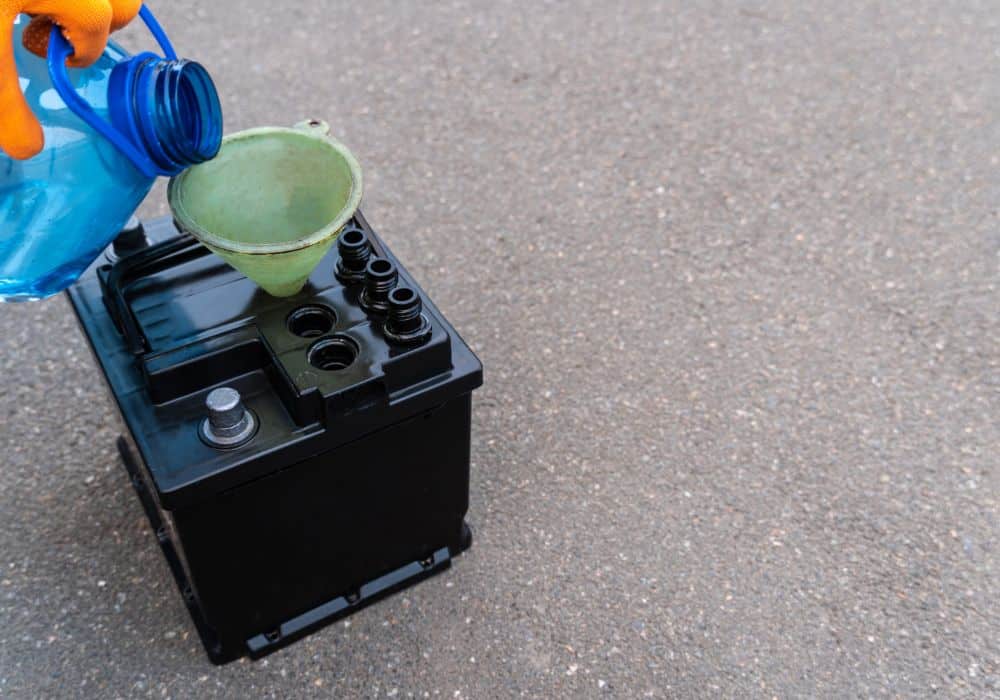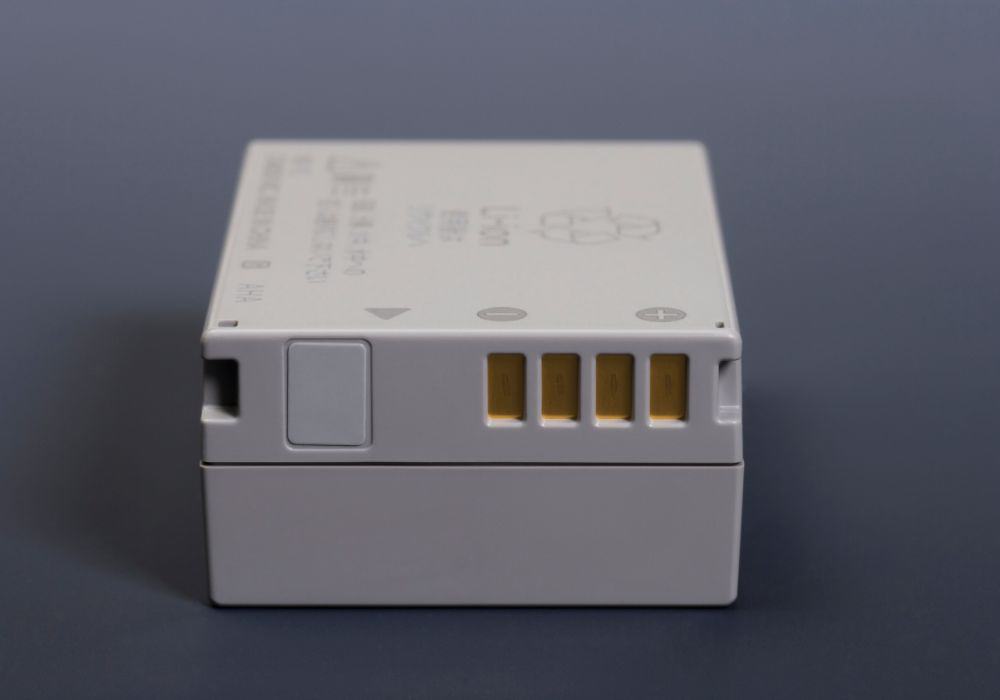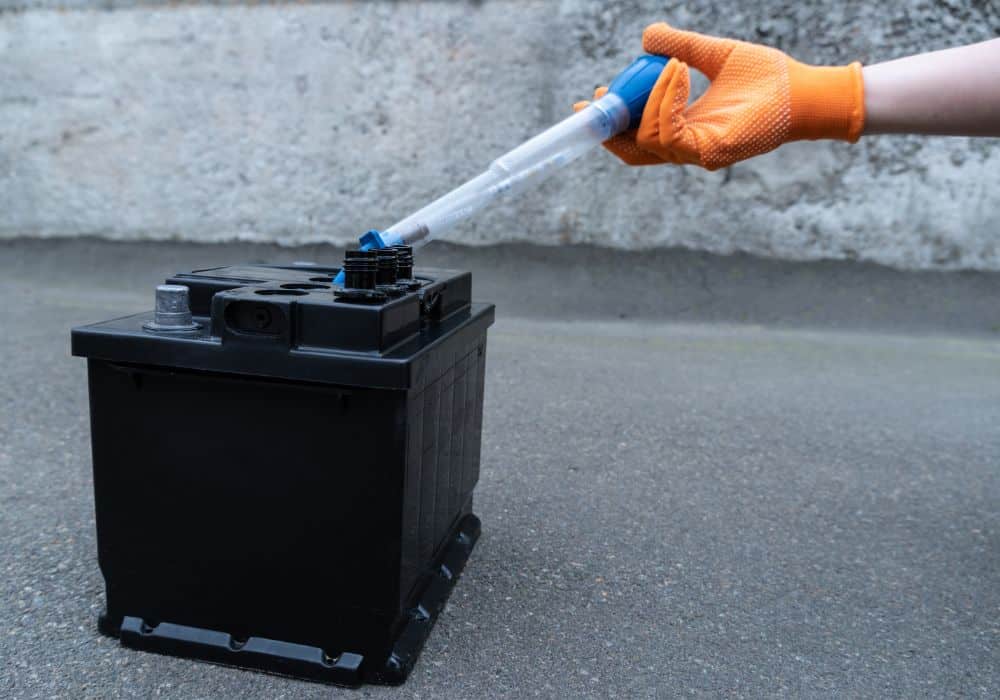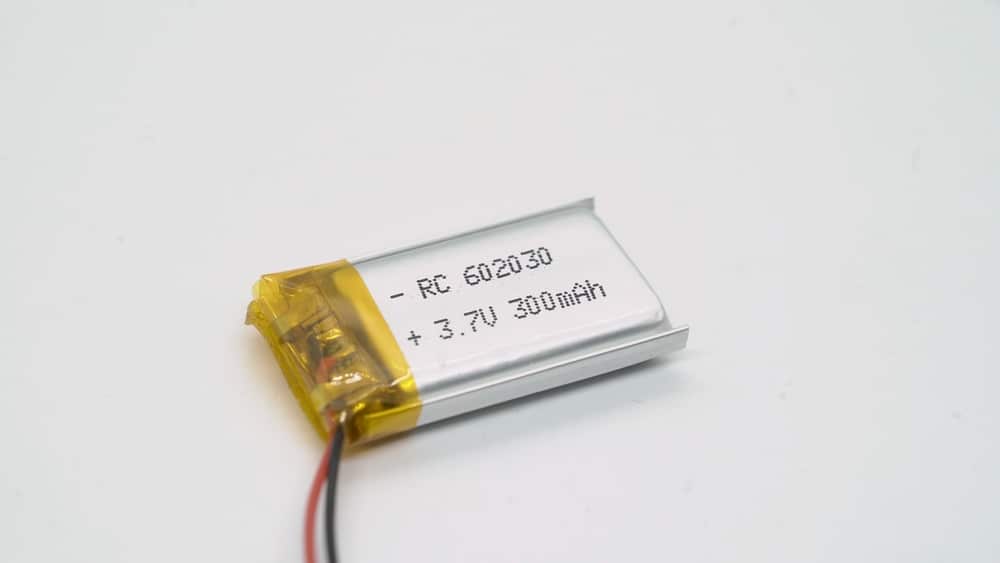From a high-tech electric vehicle to a cheap remote toy car, battery power has become essential to our everyday lives. Over the years, the world has used expensive energy sources to carry out everyday tasks.
However, after enough developments, batteries have proved to be an effective invention as a source and storage of electrical energy. The internal electrolyte in the battery is one of the main components that do all the magic.
In today’s post, we will discuss what is an electrolyte in a battery and how you can make one at home.
Table of Contents
What Is The Electrolyte In A Battery?
The electrolyte in a battery is a substance that gives ions (electrically charged atoms that have gained or lost electrons) when dissolved in water or fluids. Due to the movement of positive and negative ions, the solution conducts an electrical current, which flows between the two electrodes – the anode and the cathode.
The battery electrolyte can be a liquid substance or a solid, depending on the type of battery. However, the potential electrolytes can be any medium that contains ions.
We can classify electrolytes into strong and weak chemical compounds. Strong electrolytes are those that almost or fully ionize in a solution, and weak ones partially ionize.
How Do Electrolytes Work In A Battery?

To understand how a battery electrolyte works, we first need to study the main components of the battery – the anode, cathode, and electrolyte (that keeps the two terminals apart). As we have already discussed the electrolyte above, let’s explore the anode and cathode.
The anode is the negative terminal or reducing electrode that oxidizes and releases electrons to the external circuit during the electrochemical reaction.
On the other hand, the cathode is the positive terminal or oxidizing electrode. It is reduced during the electrochemical reaction by acquiring electrons released by the anode to the external circuit.
The electrolyte provides a medium for the electrical charge in the form of ions to travel between the two terminals. The cations with a positive charge move toward the cathode, and anions with a negative charge move toward the anode. The electrolyte further brings the suitable chemical that is required for the reaction in contact with the terminals, which converts the stored energy into usable electrical energy.
The usable electrical energy meets the attached device, whether a lightbulb or a vacuum cleaner, and powers it up.
What Is The Electrolyte Of A Battery Made Of?
The battery electrolyte consists of soluble salts, acids, or bases. However, the precise nature of the electrolyte depends on the type of battery and the amount of current required.
For instance, the common alkaline household batteries use potassium hydroxide, which is a strong electrolyte and thus has high electric conductivity. On the other hand, a lead-acid battery in automobiles utilizes sulfuric acid as an electrolyte and produces the intended reaction.
Let’s look at some types of batteries with their suitable electrolytes.
Common Battery Types With Their Electrolytes

1. Lead-acid
A lead-acid is a rechargeable battery that uses an acidic electrolyte (sulfuric acid) and metal lead (Pb) for chemical reactions. Sulfuric acid is a very corrosive substance that is soluble in water. It is colorless with a slight tint of faint yellow-green. However, it decolors to a brownish tint due to rusting from anodic corrosion, which occurs when the anode dissolves in the electrolyte.
For a controlled chemical reaction, metal lead submerges in sulfuric acid, which causes the battery to produce electricity. This chemical process of extracting the current from a lead-acid battery is known as discharging.
Moreover, when the battery needs to recharge, the reactants (previously used in generating electricity) can be regenerated by externally passing a current through the battery. The process is known as recharging.
The lead-acid battery is weighty but generates high voltage. It comes equipped with 2V cells, which means it has an even number of volts. The most common lead-acid batteries we see out there have a voltage of 2V, 6V, 12V, and 24V.
So it is commonly used in machinery, UPS (Uninterruptible Power Supply), and systems that require high power to run and don’t mind the weight of the battery.
2. Nickel-cadmium (NiCd)
The electrolyte used in Nickel-cadmium (NiCd) batteries is a thirty percent potassium hydroxide (KOH) solution in distilled water. At room temperature, its specific gravity remains between 1.240 and 1.300.
Compared to lead-acid batteries, NiCd batteries are expensive but have a higher energy density, meaning they can store more energy per unit weight. It also lasts longer than lead-acid batteries as it has more life cycles, around 2000-2500.
3. Nickel-metal-hydride (NiMH)
The nickel-metal-hydride (NiMH) battery uses the same electrolyte as NiCd, potassium hydroxide. Potassium hydroxide, aka caustic potash, is an inorganic compound and a strong base prominently used in most soft and liquid soaps. The electrolyte is colorless and has many industrial uses.
The battery contains electrodes made up of unique metals such as nickel, cobalt, manganese, and aluminum which are also present in lithium-ion batteries. However, the NiMH battery is more delicate than the lithium-ion as well as the NiCd battery.
4. Lithium-ion (Li-ion)
Lithium-ion (Li-ion) batteries use electrolytes made up of lithium salts, such as Lithium hexafluorophosphate (LiPF6) in an organic solvent. Li-ion batteries work with both gel or dry polymer and liquid electrolytes.
The cells in Li-ion batteries are lightweight and have a high energy density, giving them an edge over any battery cell. They are capable of generating 3.6V of power, making them useful in a wide range of applications, such as vehicles, power equipment, and portable devices like laptops and cell phones.
How To Make An Electrolyte Solution For A Battery?

When your wet cell battery runs out of fuel (electrolyte), you can make one at home instead of buying it.
Although making an electrolyte solution requires some high school chemistry knowledge, you can still make one by following this guide. However, you have to proceed with caution, as the process of making an electrolyte is hazardous.
Before starting, decide which chemical solution you want to use in making the electrolyte. Usually, strong acids dissolved in a pure mixture of water are most suitable for batteries. The water helps stabilize the activity of hydrogen ions. You can use sulfuric acid if you have lead electrodes and nitric acid for nickel electrodes.
Note: Without pure water composition, a small magnitude of the current can explode the battery.
Tools you’ll need
Apart from the above chemicals, you need to get your hands on the following equipment to carry out the process efficiently.
- At least three thick insulating containers
- Acid resistant gloves
- Goggles
- Gripper
- Multimeter
- Hydrometer
- Drawing pipes (Preferably transparent)
- A first aid kit with baking soda to treat acid burns
Steps
Everything gathered? If yes, then follow the next steps!
- Take an insulated container, and fill it with water. Ensure to measure the volume before pouring it in. You can also leave some water in the other container if you need to dilute the solution. In either case, use pure water to eliminate any risk of contamination which can cause unwanted chemical reactions.
- Next, grip the acid container carefully using a gripper and pour it into the water. If excessive bubbles appear on the surface, pause the process for a few seconds and let them dissipate. You can pour the rest of the acid once the bubbles are gone.
- At this point, the electrolyte solution should be at a high temperature. So you can cover it to allow any impurities to take place. However, ensure the hot air is escaping.
- When the solution in the container cools down, use the hydrometer to check its strength and add the liquids as required.
- Once you have reached the required strength, carefully pour the acidic solution into the battery slots. You can use drawing pipes to do that, with one end at the bottom of the container and the other end in the battery slot.
- With your acid-resistant gloves on, tilt the container at a gradually increasing angle to let the acidic solution move into the battery slot. Fill each battery slot about three-quarters full.
- Once the slots are full, remove the pipe and close the slots. And that’s it! Your battery is ready to generate some energy.
Lastly, use a multimeter to check how much voltage your battery is producing across the terminals. Hopefully, that battery is good to go!
Summary
The electrolyte in a battery is a solution that allows charged ions and current to pass through the cathode and the anode terminals. The electrolyte has specific chemical characteristics that react with electrodes, and the reaction converts stored energy into usable electrical energy.
The electrolytes usually consist of strong acidic solutions such as sulfuric and nitric acid, but generally, an electrolyte can be of soluble salts, acids, and bases.
With everything said, we hope this post brought value to you. If you learned something new today, don’t forget to share it with your friends!
